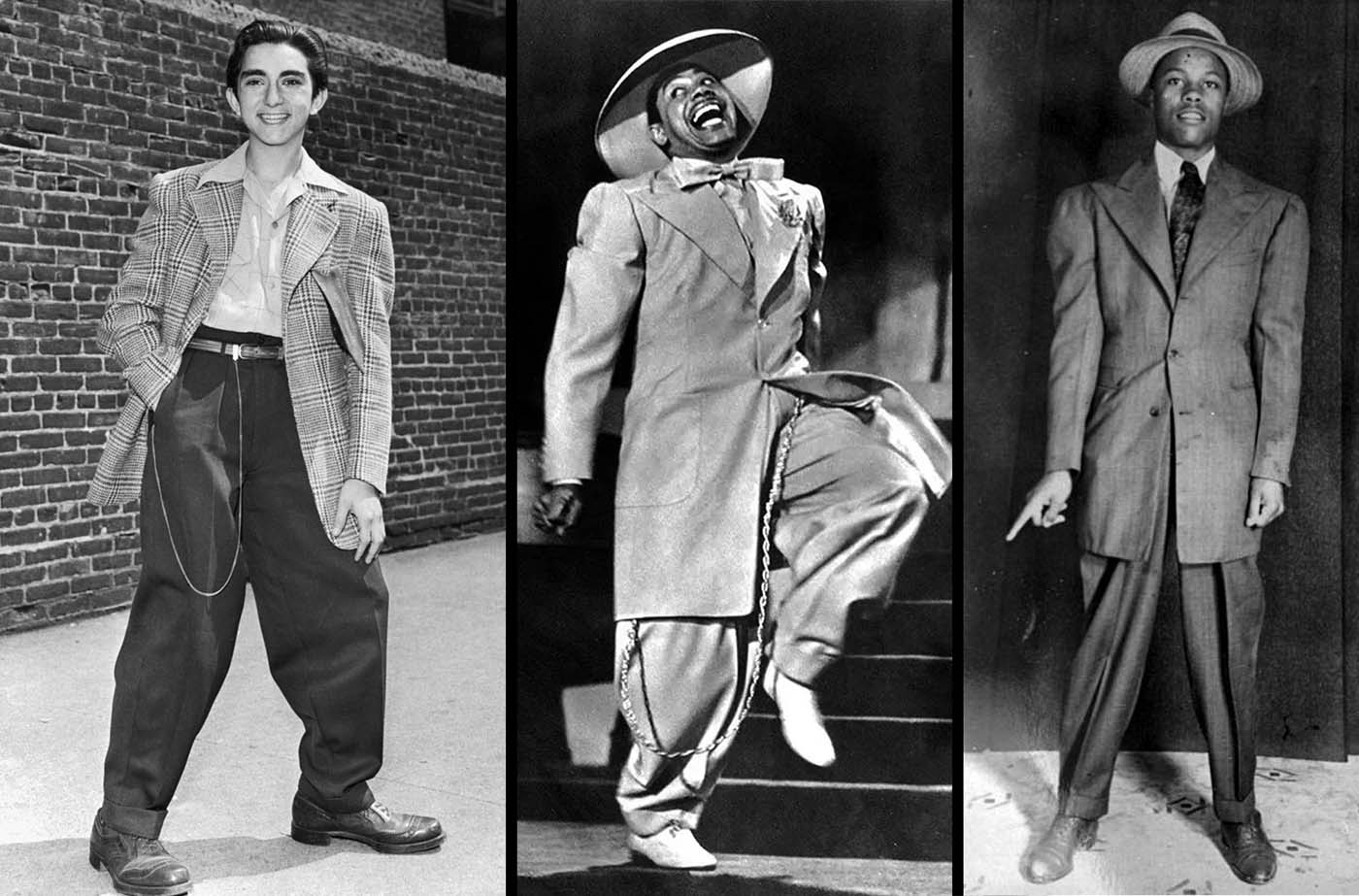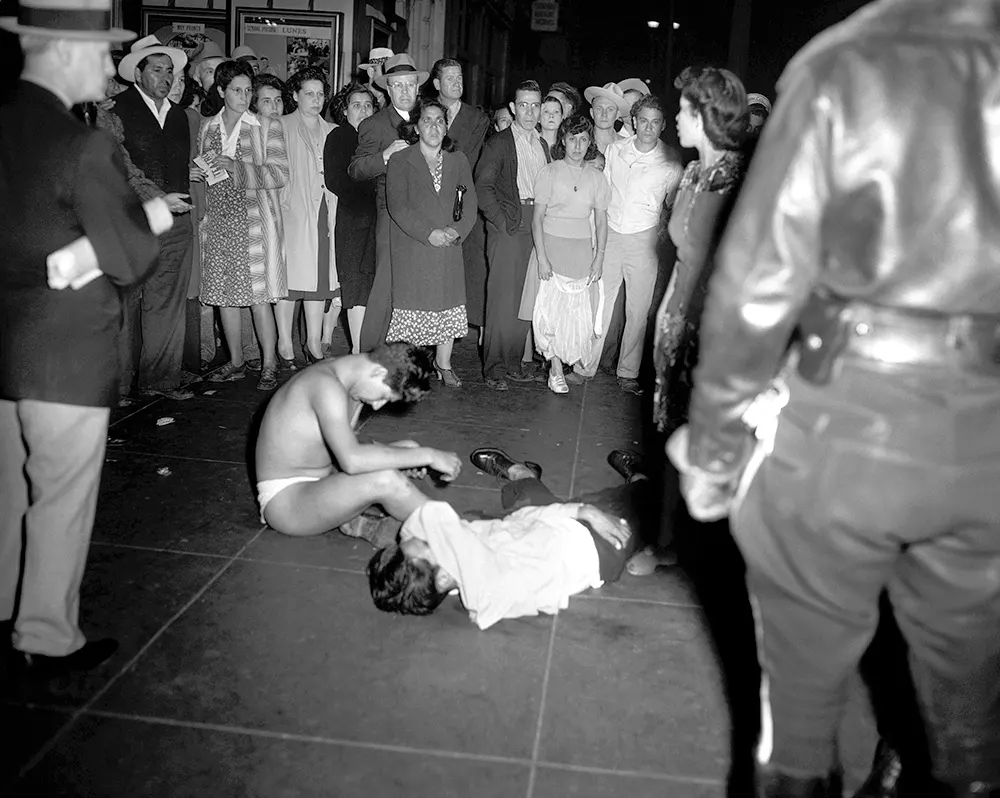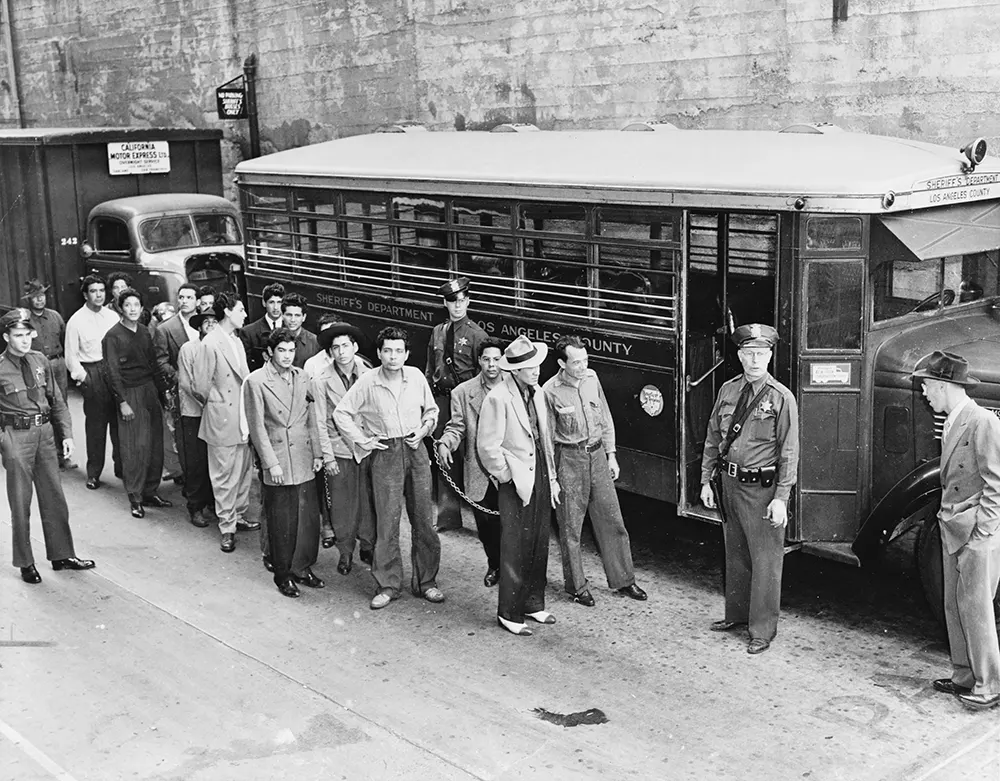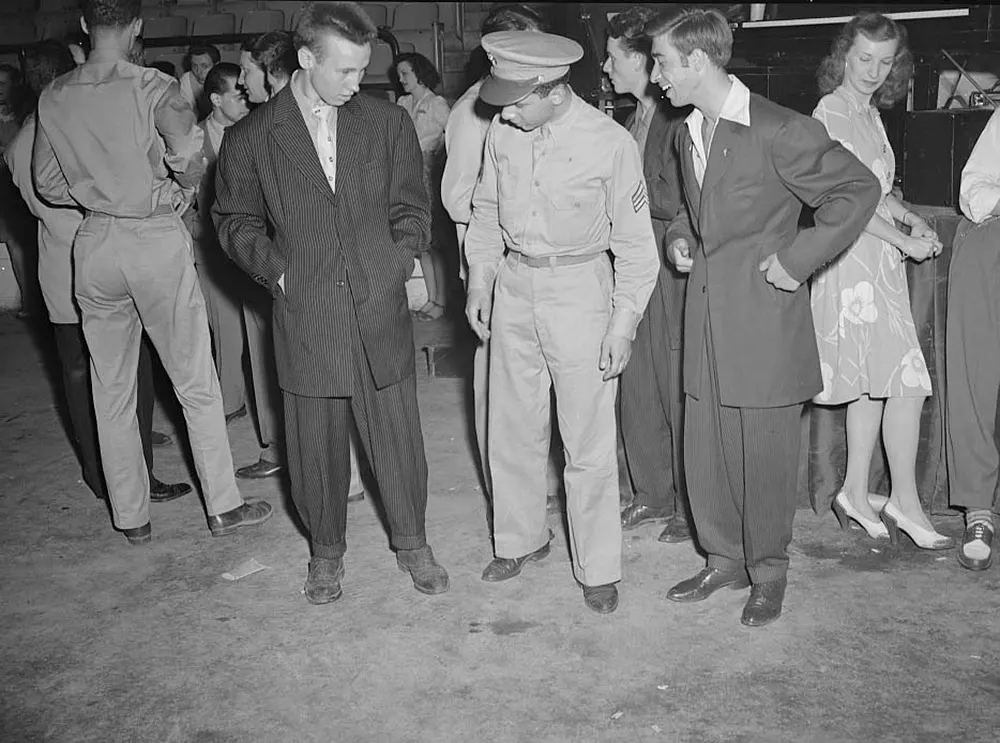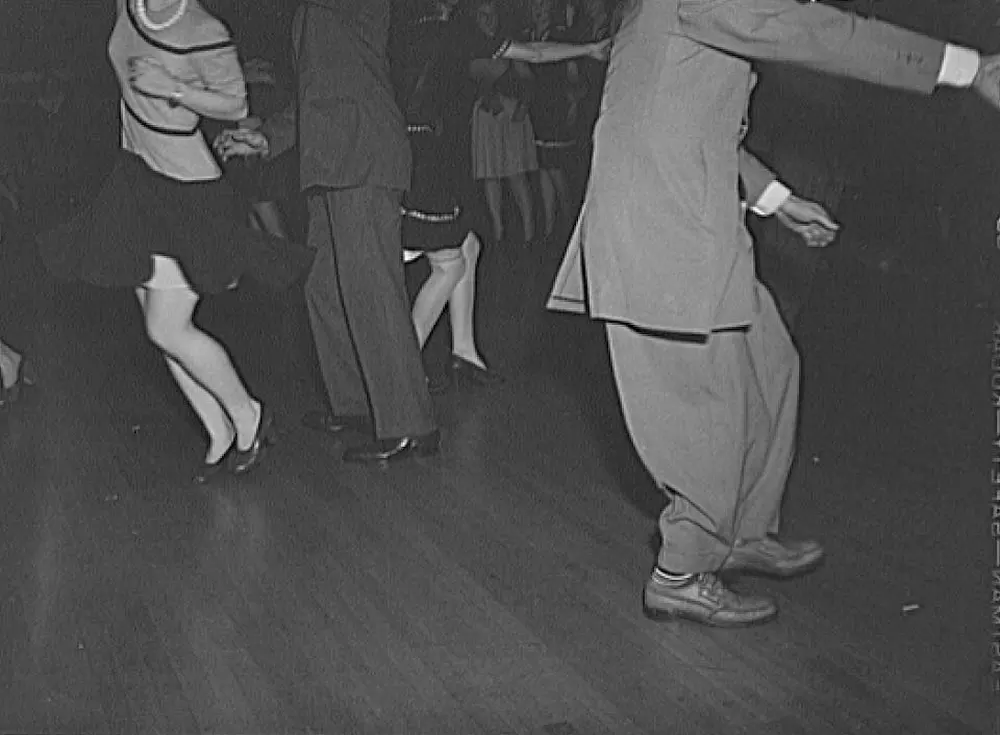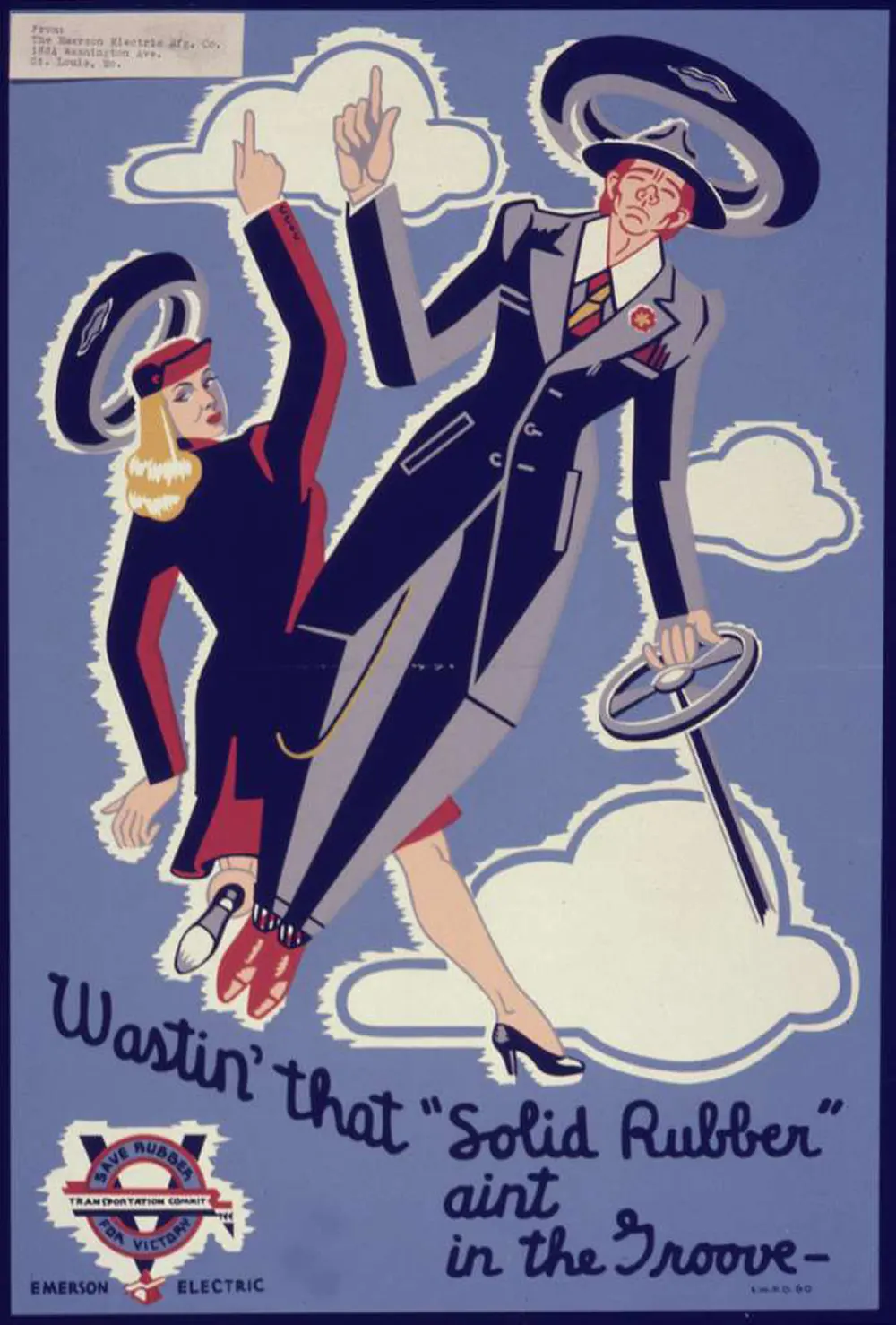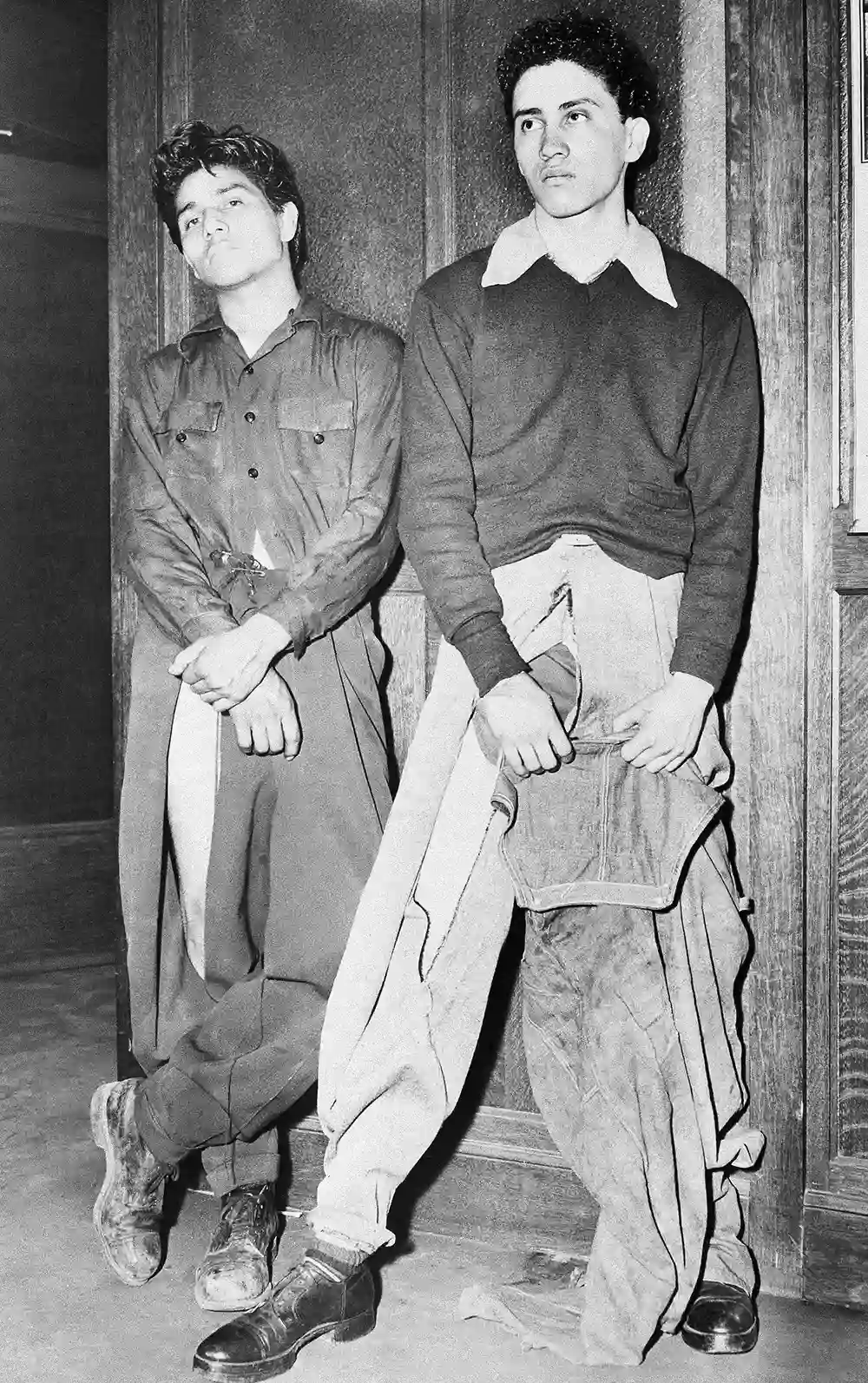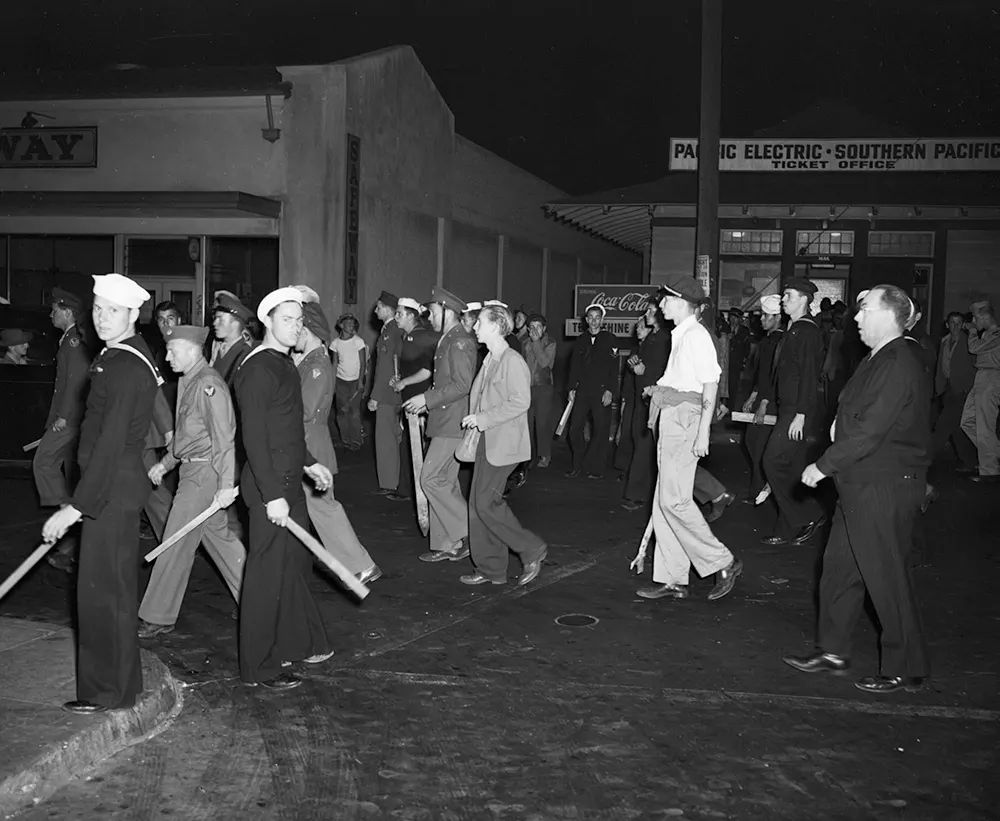The riots took their name from the baggy suits worn by many minority youths during that era, but the violence was more about racial tension than fashion. American servicemen and white Angelenos attacked and stripped children, teenagers, and youths who wore zoot suits, ostensibly because they considered the outfits, which were made from large amounts of fabric, to be unpatriotic during World War II. Rationing of fabrics and certain foods was required at the time for the war effort. While most of the violence was directed toward Mexican American youth, African American and Filipino American youths who were wearing zoot suits were also attacked. A zoot suit (occasionally spelled zuit suit) is a men’s suit with high-waisted, wide-legged, tight-cuffed, pegged trousers, and a long coat with wide lapels and wide padded shoulders. The zoot suit originated in an African American comedy show in the 1930s and was popularized by jazz singers. Cab Calloway called them “totally and truly American”, and a young Malcolm X wore them. This style of clothing cultivated a sense of racial pride and significance; however, the fashion statement soon made its way into the wardrobes of young Southern Californian Mexican Americans, Italians and Filipinos, who became the quintessential wearers of the zoot suit. The transfer and sharing of the zoot suit fashion indicated a growing influence of African American popular culture. Additionally, “analysis of the Los Angeles zoot-suit riot and journalists’ and politicians’ in and the outfit’s connections with race relations, slang, jazz music and dance permit an understanding of the politics and social significance of what is trivial in itself – popular culture and its attendant styles”. The zoot suit was originally a statement about creating a new wave of music and dress, but it also held significant political meaning. The flamboyant and colorful material indicated a desire to express oneself against the boring and somber slum lifestyle. The zoot suit provided young African American and Mexican youth a sense of individualistic identity within their cultures and society as they discovered “highly charged emotional and symbolic meaning” through the movement, music, and dress. The zoot suit typically included bright colored fabric, long suit coats that often reached the knees, wide shoulders, and gathered or tapered pants. The arm and ankle areas were often much tighter than the rest of the fabric, giving the whole look a triangular shape. Often the suit was paired with accessories such as chains and leather soled-shoes, which were typically worn to exaggerate and prove a point of rebellion standing against the wealth and status that many of these youth were unable to access due to their economic and racial identities. The urban, Mexican-American youth often called themselves “pachucos”. The female parallels were called “pachucas” and wore tight sweaters and relatively full, flared skirts, often paired with high hair-dos, large earrings, and heavy makeup. Many young Mexican-American women who were not pachucas avoided these clothing styles and hairstyles in order to avoid being seen as troublemakers by white people. Some women even reported that they had heard of pachucas hiding knives in their hair. As part of the war effort, by March 1942 the United States had begun rationing various resources. Restrictions on wool had a direct effect on the manufacture of wool suits and other clothing. There were regulations prohibiting the manufacturing of zoot suits, but a network of bootleg tailors continued to manufacture them. This exacerbated racial tensions, as Mexican American youths wearing the zoot suits were seen as un-American because they were deliberately ignoring the rationing regulations. The Zoot Suit Riots are commonly associated with the Sleepy Lagoon murder, which occurred in August 1942. The Sleepy Lagoon, as it was nicknamed, was one of the larger reservoirs outside the city of Los Angeles. On the night of August 1, 1942, zoot-suiters were involved in a fight at a party near the Sleepy Lagoon. The next morning one of the partygoers, José Díaz, was dead. There was public outcry against the zoot-suiters, fueled by local tabloids. During the period from 1942 through 1943, the news media continued to portray the zoot-suiters as dangerous gang members who were capable of murder. On the basis of the news reports, more and more people began to believe that the Mexican American youths, particularly the zoot-suiters, were predisposed to committing crime. It was in this racially charged atmosphere that the conflict between predominantly white servicemen stationed in southern California and Mexican American youths in the area began. The riots began on June 3, 1943, after a group of sailors stated that they had been attacked by a group of Mexican American zoot-suiters. As a result, on June 4 a number of uniformed sailors chartered cabs and proceeded to the Mexican American community, seeking out the zoot-suiters. What occurred that evening and in the following days was a series of conflicts primarily between servicemen and zoot-suiters. Many zoot-suiters were beaten by servicemen and stripped of their zoot suits on the spot. The servicemen sometimes urinated on the zoot suits or burned them in the streets. One local paper printed an article describing how to “de-zoot” a zoot-suiter, including directions that the zoot suits should be burned. The servicemen were also portrayed in local news publications as heroes fighting against what was referred to as a Mexican crime wave. The worst of the rioting occurred on the night of June 7, when thousands of servicemen and citizens prowled the streets of downtown Los Angeles, attacking zoot-suiters as well as members of minority groups who were not wearing zoot suits. Shortly after midnight on June 8, military officials declared Los Angeles off-limits to all military personnel. Deciding that the local police were completely unable or unwilling to handle the situation, officials ordered military police to patrol parts of the city and arrest disorderly military personnel; this, coupled with the ban, served to greatly deter the servicemen’s riotous actions. The next day the Los Angeles City Council passed a resolution that banned the wearing of zoot suits on Los Angeles streets. Remarkably, no one was killed during the riots, although many people were injured. The fact that considerably more Mexican Americans than servicemen were arrested—upward of 600 of the former, according to some estimates—fueled criticism of the Los Angeles Police Department’s response to the riots from some quarters.
(Photo credit: Library of Congress / Britannica / Wikimedia Commons / Flickr / History.com / California Historical Society). Notify me of new posts by email.
Δ Subscribe
